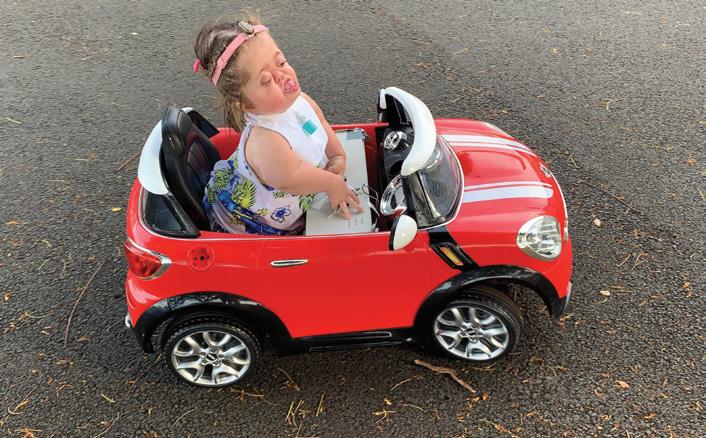
11 minute read
REHAB CASE STUDY
ELIZA — A COMPLEX PRESENTATION AND POWER MOBILITY ASSESSMENT
Written by: LISA ROTELLI
Advertisement
NRRTS thanks Adaptive Switch Labs for sponsoring this article.
Power mobility. Who is a candidate? When is it appropriate? These are some of the biggest questions clinicians, parents and complex rehab suppliers have. Powered mobility has always been designed around an adult model — made for people who had mobility and lost it, someone who has had experience with movement. We added prerequisite tests and competencies just to do a trial, wanting to make sure someone had judgment and safety skills before even getting a chance for an assessment.
I am not saying judgment and safety are not important, but we need to look at mobility differently for children. Judgment and safety must be taught to all children. No one is born with inherent knowledge of activities that they have never performed, practiced or mastered. Even when we master an activity, we still make mistakes.
The cost of not having mobility is too great. We must have augmentative mobility options to aid in the development of children who are mobility compromised. We are not just talking about mobility; we are talking about development. There have been many studies that support the fact that without mobility there are delays in development — even causing secondary disabilities. More information on the developmental importance of early mobility and the research that supports this can be found in our Focus issue on Pediatric Power & Early Intervention (via the QR code at the end of the article).
POWER MOBILITY ASSESSMENT:
When we are working with someone with multiple disabilities, there is a lot to figure out. Untying the layers of diagnoses, processing and cognitive understanding can be challenging. We need to determine which specific areas are impeding progress and then address those so that the child can develop an understanding of the activity and be successful.
Diagnoses may include:
• Speech and language impairments.
• Cortical Visual Impairments (CVI, also known as cerebral visual impairments).
• Processing impairments.
• Motor impairments.
• Sensory processing impairments.
• Seizures and the impact of seizure medication.
• Orthopedic changes.
• Pain.
• And most of all, no experience with selfinitiated movement.
The person who needs opportunities the most is the one with no experience. This scenario is also the most difficult when figuring out barriers to driving.
Where or how to begin this assessment is so important. A positive success-driven approach is necessary. We cannot start with preconceived ideas that a child is not capable or is too cognitively impaired to understand the task, or even that they will know what a power wheelchair will do for them and be excited to use one.
WHEELCHAIR SEATING:
Seating is a very critical piece of an assessment. Helping someone who does not have experience or control to transition into a functional position can increase alertness, understanding, vision, accuracy and positive outcomes.
Wheelchair seating needs to be set up for function for the child to have successful access to technology. We must understand the role of seating for both access and transition from working positions (task performance) to resting positions. It is critical to understand the importance of both roles and how to transition between each.
I hope you have an opportunity to attend a course from Karen Kangas, OTR/L. She teaches courses on the critical understanding of task supported seating, development and training for children and much more.
POWER MOBILITY TRAINING:
Power mobility training is where we often get stuck. We put a child in a power wheelchair using whatever access method we think will work, with the seating we tried to get right, and then test their mobility skills. This normally happens in a big gym wandering around with the child being told “don’t go over there” and “come over here” or my favorite, “don’t run me over.”
We must build activity-based training, not random driving or cheerleading to get someone to move. Mobility needs to be developed. It alone is not the activity. To develop understanding, there must be an objective and an understandable activity. For that reason, control of the driving method must be easy, consistent and not challenging because the driving method is not the activity itself.
ELIZA
BACKGROUND INFORMATION
Eliza is an example of the process and challenges of an assessment. Eliza is 2 years old with the diagnoses of arthrogryposis, Pfeiffer syndrome, hydrocephalus, visual processing impairments and deafness. She has significant developmental delays, is non-ambulatory, cannot manipulate objects, and she has speech and language impairments (see Figure 1).
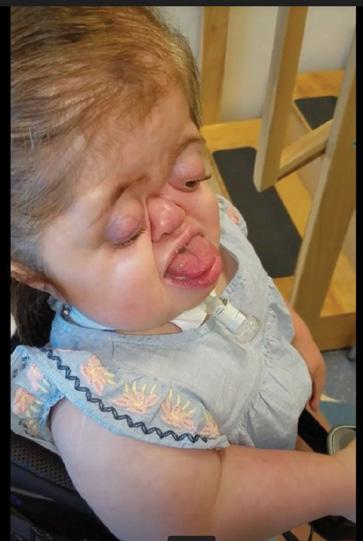
FIGURE 1 Eliza is too cute!
ASSESSMENT
Eliza’s case is complex and it is hard to determine what she understands. The only thing I know to do in these situations is to see how she responds to moving herself. This will help me get a better picture of her likes, dislikes or interests; figure out the best seating for her to access switches; and determine where to start mobility training
DRIVING METHOD
A critical piece of any power mobility trial is setting up seating and access (the driving method) so that there is no question that activation is intentional. Creating an activitybased assessment that is simple, interesting and purposeful helps lessen the anxiety of the situation. Remember this child is coming to an environment that can be very overwhelming. They are meeting many new adults, being judged using equipment that they have never used, sitting in a seating system that is not their own, and everyone is staring at them and giving differing instructions.
Not yet understanding Eliza, we needed to start simply and consistently with the control of movement. I start with switches because you can use one movement at a time, and when a switch is touched, it has a consistent response. Once she had some experience, she would lead us to the switch placements she could control accurately.
Here are some common techniques using a power wheelchair with electronics that can be programmed and easily changed for an activity:
• Programming a chair so when you touch a switch the chair will move without delay but not fast. When someone has processing delays, we need them to know what is happening and that they made something happen.
• Putting the switch where the child naturally rests when the driving method is turned on so when they move away from the switch it causes the wheelchair movement to stop instead of the wheelchair’s movement pushing them into a switch.
• Starting with a turn so a person can explore movement in a smaller space before we must intervene to prevent a collision.
• Using sensors instead of mechanical switches because the location then activates the switch, not pressing and holding a switch.
SEATING AND STARTING THE TRIAL
Knowing that we were going to put Eliza in a power wheelchair, her upright seating would be critical. A very big challenge for a very small body. Eliza’s femur length was 7 ½ inches and her seat width was 5”. The complex rehab supplier, Kevin, was very helpful and creative. We had to make a seat that would support her in an upright position and fit into a power wheelchair (see Figure 2). We accomplished this using molding bags for the seat and blankets and towels for the back. We had to find an activity to do in the power wheelchair that she could understand. We used an old Invacare Power Tiger that belonged to the clinic (I miss that chair). We connected a digital drive control so she could use proximity switches (see Figure 3). Getting near the switch would cause activation and, because it is digital (rather than proportional), it is consistent. One switch did the same thing every time she activated it. We started with turning, with people standing around her in a circle. We then moved to a forward path.
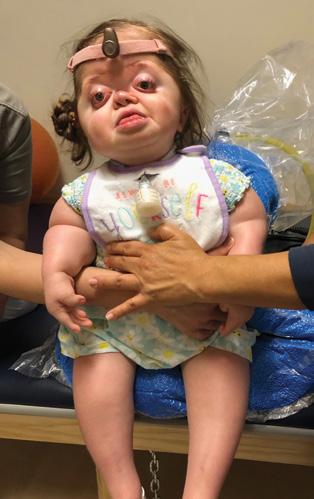
FIGURE 2 Looking at Seating
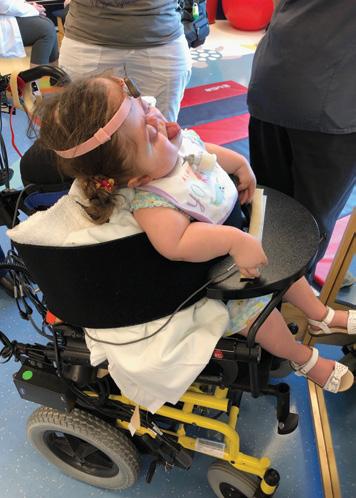
FIGURE 3 Switch use during power mobility trial
We set up a path with one switch for forward, having a person stand about 5 feet in front of her, just to the side of the forward path, with a colorful toy (see Figure 4). When she got to the person holding the toy, she took her hand off the switch and reached for the object. This is a fantastic lesson on going and stopping. The object was then put on the tray. Another person then stood off to the other side of the forward path, about 5 feet away, with another toy. When she drove to that person, she stopped, reached for the toy, and we placed it on her tray. We then placed a mirror 10 feet in front of her, and we stuck the toys to this (see Figure 5). We backed the chair up and allowed her to repeat the activity, driving to the mirror with the toys. On the third trip to the mirror, we turned the chair on, and she started driving before we were ready. She understood the activity and, without yelling at her to stop, she stopped on her own every time she came to something to do. Helping to develop skills and understanding is a process.
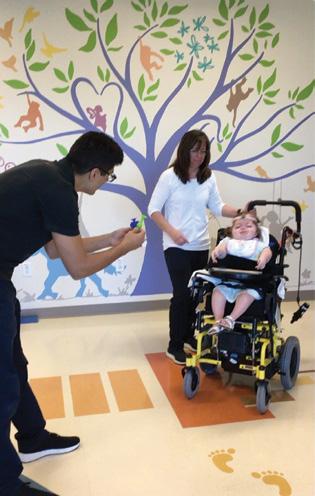
FIGURE 4 Driving toward an engaging toy during power mobility trial
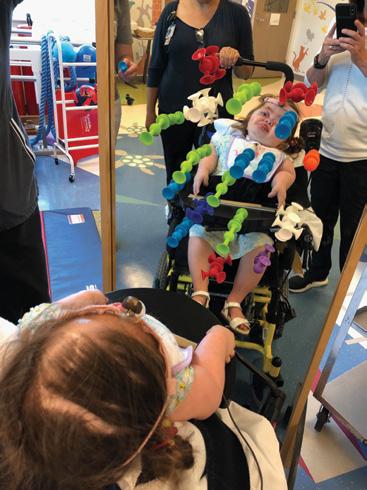
FIGURE 5 Driving toward a mirror during power mobility trial
Training power mobility skills is no different than training for any activity that we learn — coaches and teachers do this every day. Start with simple, repeatable steps and repeat those until the person can do these without thought (automatically). Then we move to the next steps, always starting at the beginning and adding a new step to the end.
The clinic working with Eliza, Kapiolani Medical Center for Women and Children in Hawaii, is dedicated to their clients, the process of teaching and the idea of moving to learn. Not just doing an assessment and not just testing instead of training. Building a training plan that is simple allows anyone to help consistently train a client for short time periods and is the meaning of supporting development.
Of course, this process was started during the COVID-19 pandemic, adding extra teaching challenges. The family was able to get a modified GoBabyGo! car as a project through the local university so they could practice when they were not able to get into the clinic (see Figure 6). They could only practice going and stopping, not turning (developing routes) because there was only one switch.

FIGURE 6 Driving a GoBabyGo modified ride-on car
Eliza is now 5. Her physician and the clinic prescribed her a power wheelchair (see Figures 7 & 8). She could readily demonstrate understanding and it was easy to show the positive gains mobility brought her. Showing competence in driving to objects, she reaches and grabs. She is now vocalizing and communicating and is participating in school. She drives her power wheelchair with a joystick, independently moving up to people and talking. She loves repeating to her mom, “Momma, Momma come.” And then driving away. She is now going to school and drives herself on and off the school bus!
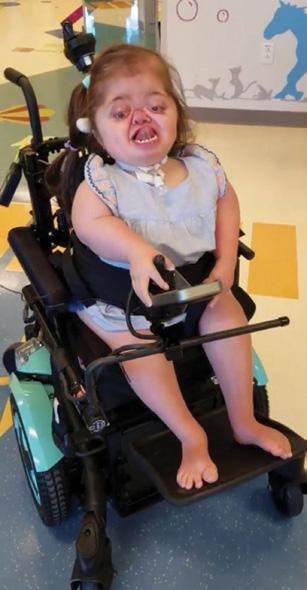
FIGURE 7 Power wheelchair delivery (front view)
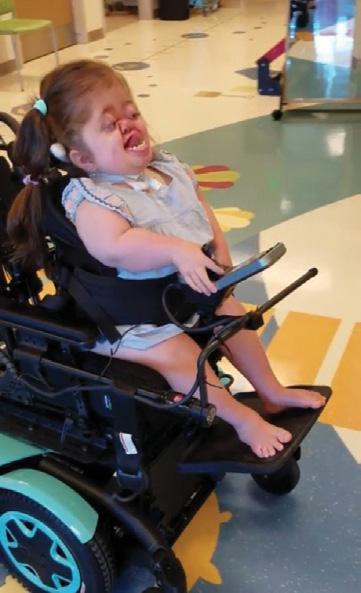
FIGURE 8 Power wheelchair delivery (side view)
So, who is a candidate for powered mobility? I hope you agree it is everyone who is mobility compromised, regardless of their cognitive impairments, and we cannot mandate prerequisites for learning.
Mobility and safety must be taught, and it is our responsibility to make that happen. Start early, agree on everyone’s roles and responsibilities, and keep it simple and consistent. Mobility is the single most important opportunity you can give to a child. A life without mobility will be a life of dependence.
CONTACT THE AUTHOR
Lisa may be reached at LROTELLI@ASL-INC.COM

Lisa Rotelli, director of Adaptive Switch Laboratories Inc., has a lifetime of experience starting as a clinical coordinator for a rehab hospital in Northern California. She also served as a rehab manager for a large rehab equipment supplier and a rehab specialist for one of the major manufacturers of rehab wheelchairs. She is certified by the University of Tennessee at Memphis as a seating specialist and the University of Misericordia in Pennsylvania in pediatric seating. She specializes in alternative access and drive control systems and has designed several drive control systems for severely involved clients. She presents at national conferences to all levels of clinical therapists, suppliers and educators.




